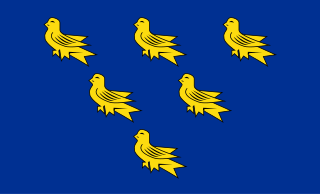Captain Alfred Clayburn Atkey was a Canadian First World War flying ace, officially credited with thirty-eight aerial victories, making him the fifth highest scoring Canadian ace. However, all those above him flew in single-seat fighters, whereas Atkey gained all his victories in heavier two-seater aircraft, becoming the highest scoring two-seater pilot of the war.
Captain Gerald Gordon Bell was a Canadian First World War flying ace, officially credited with sixteen aerial victories while serving in the British Royal Flying Corps and Royal Air Force.
Flight Lieutenant James Anderson Slater was a British First World War flying ace, credited with 24 aerial victories. He served in the Royal Air Force (RAF) as an instructor after the war until killed in a flying accident.
Group Captain Harold Alfred Whistler, was an English fighter pilot and flying ace in the First World War.
Captain Lewis Isaac Collins was a Scottish World War I flying ace credited with five aerial victories.
Captain Walter Alfred Southey was a British First World War flying ace, credited with twenty aerial victories, including five balloons, making him the second highest scoring ace in No. 84 Squadron, behind Andrew Beauchamp-Proctor.
Flight Lieutenant William Geoffrey Meggitt was a British World War I flying ace credited with six aerial victories.
Captain Thomas Sydney Sharpe was a British World War I flying ace credited with six aerial victories.
Squadron Leader Victor Rodney Stokes White (1895–1967) was an English World War I flying ace credited with six aerial victories. He returned to military service during World War II.
Captain Ian Henry David Henderson was a British World War I flying ace credited with seven aerial victories.
Captain Henry Hollingdrake Maddocks was a British World War I flying ace credited with seven aerial victories.
Major George Lawrence Lloyd was a Rhodesian-born flying ace of the First World War, credited with eight aerial victories.
Lieutenant Colonel Alan Machin Wilkinson (1891–1972) was a British First World War flying ace credited with nineteen aerial victories. He was one of only about 25 pilots twice awarded the DSO during the war, five of whom were also holders of the Victoria Cross.
Lieutenant-Colonel William Earle Molesworth was a British First World War flying ace credited with eighteen aerial victories.
Captain Sidney William Highwood was a British World War I flying ace and balloon buster credited with sixteen aerial victories.
Captain Geoffrey Herbert Hooper was an Australian World War I flying ace credited with eleven aerial victories, all against German fighter planes.
Flight Lieutenant Harry Noel Cornforth Robinson was a British World War I flying ace credited with 10 aerial victories. After winning the Military Cross and Croix de guerre, he remained in service post-war, winning the Distinguished Flying Cross in Iraq.
Captain William Lewis Wells was a British World War I flying ace credited with ten aerial victories. His exceptional valour twice won him the Military Cross.
Captain Saint Cyprian Churchill Tayler MC was an English World War I flying ace credited with nine aerial victories. He scored those victories while flying for two different squadrons, using three types of aircraft.
Captain Harold Ross Eycott-Martin began and ended his military career in the Royal Engineers. While seconded for duty with the Royal Air Force, he would win a Military Cross in the well-known air action in Italy in which Alan Jerrard won his Victoria Cross. Eycott-Martin would end the war as a flying ace credited with eight aerial victories. In the aftermath of the war, he would fall into disgrace. After being declared bankrupt, he would desert the Engineers and be ejected from the army.







